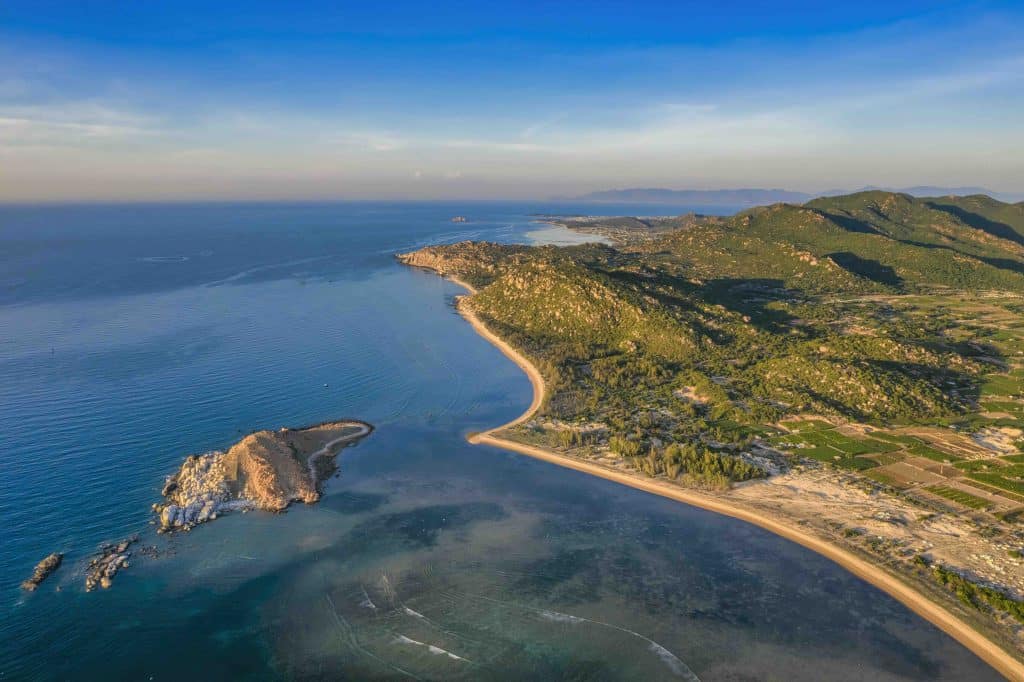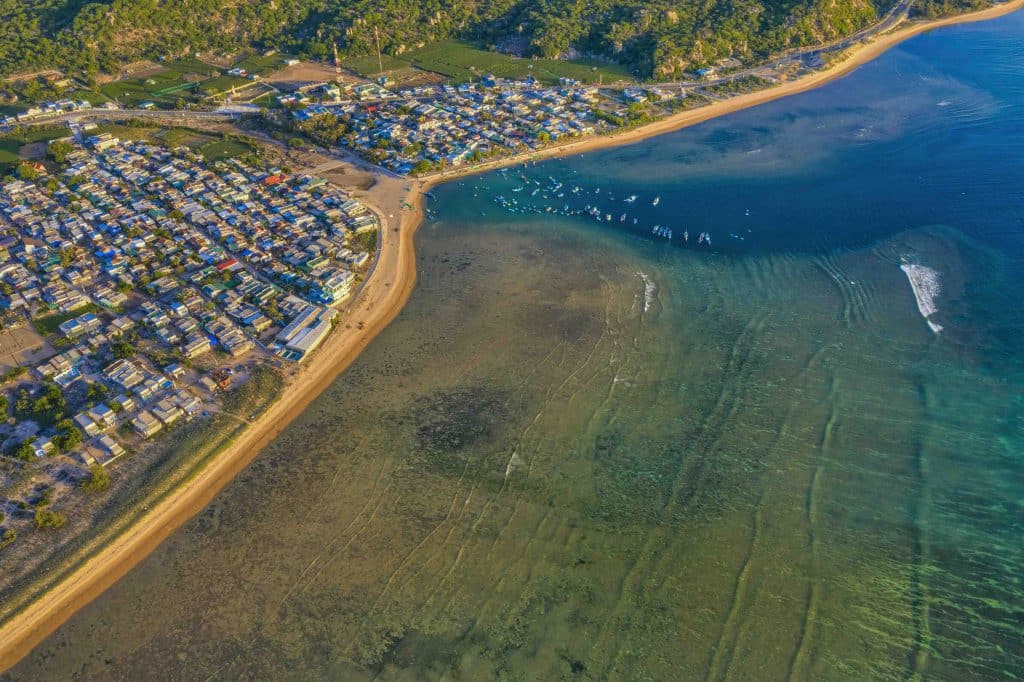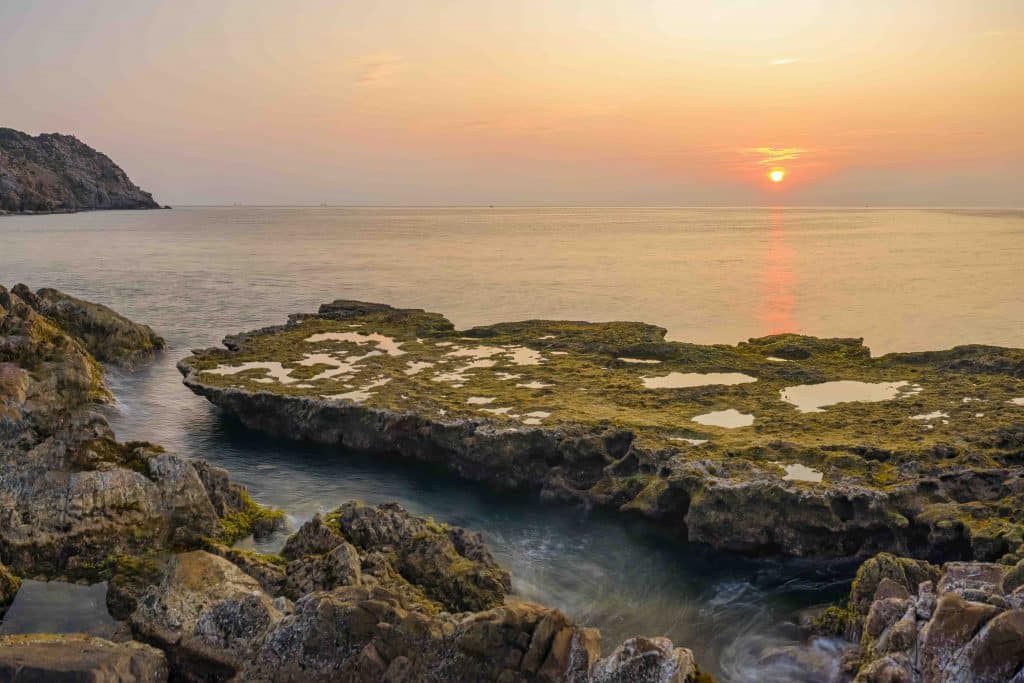Story: Nam Hoa
Photos: Tonkin
Recognized as a UNESCO World Biosphere Reserve on April 14, 2021, Nui Chua National Park spans over 106,600 hectares in Ninh Hai District in northeastern Ninh Thuan province. Located in the driest and harshest region of Vietnam, this area boasts three main ecosystems: marine, savanna (dominated by grassland), and forest. Aside from its characteristic tropical dry forest, Nui Chua also features various types of forest common to Vietnam, such as evergreen closed-canopy forests and tropical coniferous forests.

We set off to explore the savanna from Nui Chua National Park’s administrative center, trekking along a coastal trail, weaving through a “forest of rocks” on the mountain slopes, and passing clusters of low thorny shrubs. Trekking in this savanna means confronting the harshness of nature. The scorching heat and relentless winds lashed at us, yet the sky and sea were deep blue, and the sunlight was dazzlingly golden – everything existed in extremes.
Despite the severe climate, the savanna has supported generations of local people, who have harnessed its potential to thrive: raising sheep, cultivating grapes, and fishing in the sea.
We pressed on through the rocky terrain, gradually ascending the slopes of Nui Chua, and set up camp on a small, relatively flat patch of dry grass halfway up a mountain ridge jutting into the sea. From this vantage point, we had a sweeping view of the natural landscape. Behind us, lush green forest canopies rose up the slope; in front, the endless deep blue sea stretched to the horizon. To the south, Rai Cave stood out along the coastline, with the prosperous village of Thai An and its verdant vineyards further in the distance. To the north, pristine white sandy beaches curved gracefully, framing the stunning Vinh Hy Bay.

As the sun set, the sea darkened, and the peaks of the Nui Chua massif etched random, peculiar shapes against the sky. After setting up our tents, we kindled a small fire using dry branches gathered nearby. The sea breeze roared through the shrubs, creating strange, ever-changing sounds. We huddled around the fire, listening to the crackling of burning wood as our Raglai guide softly recounted the origins of the name “Nui Chua” and its various peaks. As the night deepened, stars twinkled above while the lights of fishing boats shimmered on the sea, merging sky and ocean into a breathtaking, magical whole.
We woke very early, rekindled the fire to boil water for coffee, and awaited the sunrise. Still “submerged” beneath the sea, the sun cast its golden rays onto the eastern horizon, gradually redrawing the boundary between sky and sea – a boundary that had been blurred the night before. With every passing moment, nature’s marvels transformed the colors of the landscape at dawn, leaving us mesmerized, our coffee forgotten and cold. Then, the radiant orange sun slowly emerged from the horizon, casting a dazzling V-shaped beam of light with rosy wings that faded into the distant brightening sky, heralding a new day. Watching the sun rise above the sea, I gazed around and was once again stunned by the breathtaking beauty. The sea mirrored the sky, forming two vast blue planes meeting at a golden, straight horizon. A few thin white clouds in the sky and gentle ripples on the sea’s surface added delicate touches to the scene, creating a perfect picture before us. Moreover, the golden morning light, as rich as honey, drenched the forests on Nui Chua’s slopes, making the green foliage sparkle like smiling eyes welcoming the new day. The smooth, curved sandy beaches, framed by contrasting light and shadow on the cliffs, resembled a shy maiden with her hair cascading, partially veiling her face.

We had breakfast and quickly packed up our tents and trash to descend the mountain. The early morning air was refreshingly cool, allowing us to reach Hang Rai swiftly. This colossal stone table, thousands of years old, is a one-of-a-kind “waterfall on the sea” in Vietnam. Ocean waves crash onto the rock, and as the water recedes, it flows back into the sea like a stunning white waterfall. The rocky platform below Hang Rai, slightly lower and extending northward, is covered in a smooth green moss that glistens under the morning sun. Its colors shift continuously with the changing light. We eagerly plunged into the cool seawater, letting our minds drift in the harmonious symphony of waves and wind.
Nui Chua is not the barren expanse we had imagined but a fascinating savanna filled with beautiful landscapes and captivating natural experiences.










